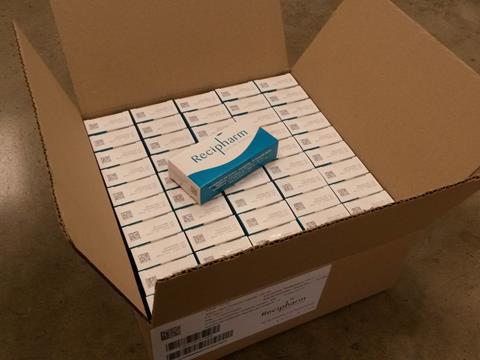
As a leading Contract Development and Manufacturing Organisation, Stockholm-headquartered Recipharm has had to grapple with the demands of serialisation both in terms of its internal needs and those of its customers and their supply chains. Erik Haeffler, VP of manufacturing services and head of CSR, shares Recipharm’s experience.
We recognised the impact of the EU FMD quite early. Pre-studies started around 2013, and the project kicked off in 2014. It’s worth bearing in mind that other markets prior to the new regulations have required full or partial serialisation. For example, we have special labels for France already, and regulations in Italy have been around for a while. New Chinese requirements came into the picture in 2015. We therefore had experience, if not in serialisation, then in special marking of packs. So we have been ahead in that sense, but the important thing is that as a corporation we decided early to set up a comprehensive project to cover all our operations and to meet regulatory requirements. In terms of where we are today, we are on track to meet the deadline, we have ordered and installed equipment and renovated our software, so I do not foresee any reason that we will have problems.
I think the main challenge we will have now is to get all of our customers on board. We see a lot of variation in their preparedness, whether they are ahead of the expected timescale or behind and need to catch up. That’s something we will learn and understand more during 2018. It is also about simple things, such as having to change your artwork on packaging material in order to fit the code on the pack. This is not technically complicated, but internally we are working with around 2500-3000 different packs. So big volumes – and that requires time.

Technological solutions
As a CDMO we are managing somewhere between 150 and 200 customers across multiple geographies with different regulatory requirements. Obviously, the US and Europe are the two biggest ones, and the time schedule is tight. We recognised early that this would be very difficult unless we pressed ahead with our preparations to deliver solutions for all of our customers. We concluded that we needed to develop a standard solution, which is compliant, simple and flexible enough to use it across our entire customer base. We believe we have this now. What we are offering to customers through our standard solutions does not include everything that a customer may want to have, but it meets all regulatory requirements and can be tailored to meet individual requirements. European legislation requires a 3D matrix code, human readable text, a tamper evidence label and extensive data management requirements. We are fully compliant with that. For the US we also have to deal with aggregation of cartons. If customers would like to have additional features, such as different types of labels, tamper evident sealing with logos, full aggregation, those will be offered separately.
In terms of our technical solution we have selected standard pieces of equipment and are working with Marchesini for our packaging machines, SEA Vision for the level 3 system and in terms of data management we are working with Tracelink for our level 4 requirements. This is the same across all of Recipharm, which includes approximately 75 to 80 packaging lines stretching over 20 sites. With regard to the hardware, the packaging machines, they do look different depending on packs, but in general it’s a standardised type of equipment.

Beyond compliance
There are great opportunities beyond serialisation once we have fully implemented our solution and we can start to explore this area more. We only have to look at how other industries manage similar kinds of systems in order to get a better overview of what is possible and then implement measures to give us greater control over the supply chain. I expect we will find numerous possibilities to improve the way the industry is operating. For us as a CDMO it will be a good opportunity to work with our customers to increase visibility of the machine-to-machine supply chain and start to drive further efficiencies.
Regarding broader anti-counterfeiting objectives, I think the new regulations have been a bit of an eye opener for the industry. Generally speaking, we are less developed than other industries. Of course, big pharma companies with high price products have previously developed more advanced models for verifying the integrity of their products as it was in their interest to do so. As we move forward, it is likely we will see more innovation in this area. For example, at the moment at Recipharm we are primarily building our offering based on our customers’ wish lists. Once the appropriate solutions are in place we can begin to look beyond this.
As for building innovative new areas of packaging functionality from connectivity, we’ve seen some ideas from our customers, particularly when it comes to dosing, and we have a couple of ongoing projects where we are working on such solutions. It’s also likely there will be further possibilities linked to the Track & Trace element of serialisation, which is interesting for the future. For example, thinking again about patient adherence, hopefully these models could help us to include more information in packs.
We have also previously had discussion about RFID for packaging. This is not really an active discussion at the moment. However, depending on how much we are able to get out of the systems we are implementing, we will potentially be able to move this forward. When it comes to smart and interactive packaging, I think the product owners are likely to focus on patient adherence. However, this could be an issue for the industry as it can reduce the efficacy of treatments, create more waste and drive up costs. It’s something that I think will come into focus in 2018.











